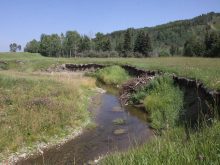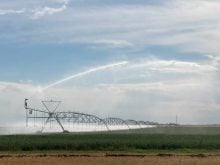REGINA — Spring runoff in central and southern Saskatchewan is expected to be above average this year.
That would be a welcome change from recent years of average to below average in many parts of the grain belt.
Above normal snowpack has resulted in improved conditions and runoff, except in parts of the southeast and the north, where it is below normal.
Read Also

New program aims to support plant-based exports to Asia
Understanding the preferences of consumers in Taiwan and how they differ from Indonesia or Malaysia isn’t easy for a small company in Saskatchewan.
The Water Security Agency said in its first runoff report for 2025 that most major water reservoirs in southern Saskatchewan are at or above normal levels for this time of year.
Daryl Harrison, the minister responsible for the WSA, said moisture conditions have improved, especially in south-central areas, because of the higher snowpack.

“This, combined with overwinter operating plans at reservoirs designed to retain water supplies, means water supply conditions have improved over last year,” he said.
Melt rate and snowfall through spring will affect the runoff forecast, but long-range forecasts predict normal precipitation and near normal temperatures through May, said the WSA.
Runoff has already begun in the southwest, in the Maple Creek area’s Big Stick Basin, the Old Wives Basin and lower portions of the Frenchman River Basin.
The operating plan for Lake Diefenbaker calls for a target elevation of 553 metres by mid-May, which would be above normal elevation for that time of year. WSA said most needs can be met at this elevation, focusing on retaining supply for drinking water.
Souris River basin reservoirs are expected to remain within normal operating ranges, as are all lakes in the Qu’Appelle River system. The Quill Lakes basin is expecting above normal runoff.
Lower flows and levels are expected on the Churchill River system.
Contact karen.briere@producer.com


















